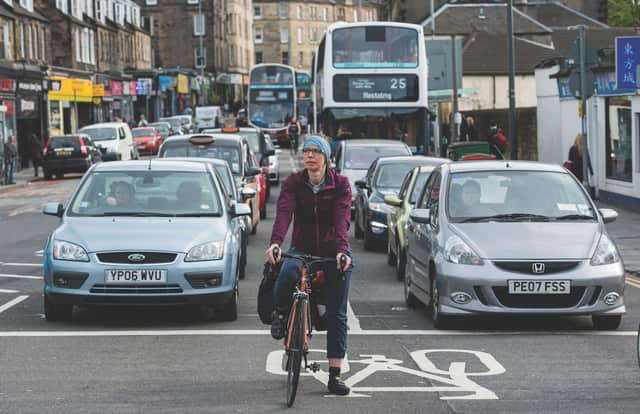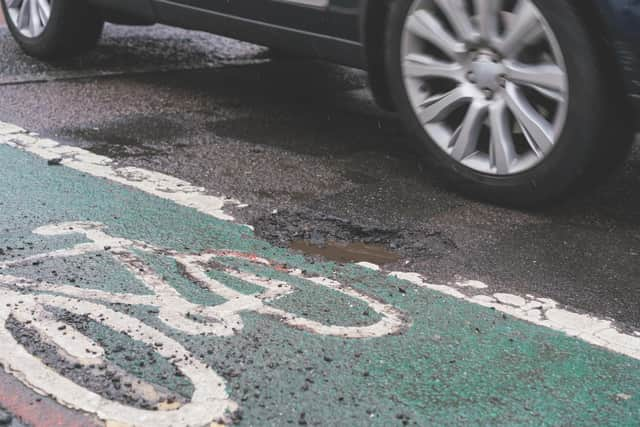CGI: active travel leading way forward for commuters


Before the global Covid-19 pandemic, using public transport was viewed by environmentally-conscious travellers as the “right thing to do”, helping cut down on emissions as they made their way to work, school... even the pub in those far-off days.
Now, as social distancing has become embedded as part of the national psyche, there is a growing desire to avoid other people when going from place to place. But, that doesn’t have to mean jumping back in the car – with the ever-increasing level of importance being placed on health and physical wellbeing, getting around should involve walking and cycling as much as possible.
This concept of active travel will transform the way we commute, shop, exercise and enjoy our leisure time, according to Pascal Coulon, director and consulting expert at global technology giant CGI.


His team is working on a project which he expects to transform the way we move about in the UK. Scotland is fully committed to expanding active travel, but it is Wales which is leading the way at the moment, with the country’s adoption of CGI-developed technology.
The information platform DataMapWales links all active travel routes across the country’s 22 local authorities, showing the location of paths, cycle routes and hubs. The information on the digital platform enables local authorities to identify where changes, such as a cycle path extension or re-routing, are needed and helps users to plan travel across the country, not just within their locality.
Coulon says: “Our role is as IT consultants; developing, implementing, delivering and supporting the underlying technology.”
Existing data from Sustrans, the walking and cycling charity which looks after the National Cycle Network, and the Ordnance Survey was used by CGI as a base and then built on with input from councils and the Welsh Government.
In the future, organisations and the public will be able to use the platform to highlight any problems, such as potholes or erosion, and make suggestions for route improvements.
For Coulon, the open architecture used to design the platform was vital to make it work effectively. He explains: “Open architecture is essentially a set of components and principles, allowing you to build accessible digital solutions. The important part is to make sure the components remain as decoupled as possible and you avoid locking yourself into a specific vendor.
“One of the principles is to use open standard – a mechanism to communicate between the various parts of your solution – but in such a way that any software or component should be able to be read without any additional translations.
“When you consider you have so many stakeholders using the digital platform, you need to make sure they are all able to access and edit the data. So, if you make it locked into a cumbersome format, you make it difficult for those stakeholders to embrace the system.”
Simplicity for users is a key part of CGI’s work. Coulon says: “The data is available on the web, on a platform which is simple to use, and which is similar to the likes of Google Maps.
“The motivation to use it comes because it contains a lot more information which help you to understand details – from the conditions of the paths, all the way down to the location of toilets. It is a comprehensive guide with very detailed local knowledge.”
Coulon believes it is only “a matter of time” before the technology is seen in Scotland. He adds: “We know that the Scottish Government is looking into it and talking to their Welsh counterparts.
“The Welsh Government is well ahead of the four nations in the UK, but we also know that the Department of Transport in London is setting up an active travel body, just as the Scottish Government is doing.
“The investment [across the UK] will run into billions of pounds because of both the physical infrastructure and the IT behind it.”
Although active travel means getting somewhere under your own steam, the use of data can help introduce the concept on longer journeys.
Coulon says: “We need to start thinking about the first mile and the last mile in a journey – you may want to go to Edinburgh from Glasgow, and you will likely travel by train or coach, but you do not have that on your doorstep; the train or coach station maybe half an hour away so active travel comes in there.
“The other element for planning is the future – as part of local development plans, local authorities are being asked to map out their future active travel network. This then helps councils to make decisions such as connecting housing developments and design an environment which is greener.
“A lot of public transport bodies are considering active travel as part of their planning. When looking at where they should put a bus or train station, they are thinking whether to place them in the heart of a city or next to a cycle path where every day there are thousands of cyclists.”
In this shifting world, a different way of thinking about travel is already emerging. Coulon concludes: “It is clear that when you look at the change in travelling within the UK following the pandemic, people will want to avoid public transport and use a more sustainable means to go work, school or wherever.”
Road ahead for active travel with the Internet of Things
The future is happening right now with the changes to the way active travel networks are being developed.
But even further advances will be made for walkers and cyclists in the coming years, according to CGI’s Pascal Coulon.
He says: “We can anticipate that in the future you will be able to have sensors on your bike to identify how rough the road is and report potholes back to the active travel route managers.”
This technology has already been developed by CGI for trains, with sensors to monitor the swaying of carriages and potentially identify where a rail might be faulty.
Coulon adds: “Alerts could be sent to cyclists and walkers to warn of icy stretches they should look out for. If you look at all the fitness apps, like Strava, we will be able to give more granular and up-to-date information – you need that up-to-date information when people are setting out on an active travel journey.
He continues: “It is all about smart cities, and the use of geospatial technology is at the heart, making it well-geared to link up to the Internet of Things.”